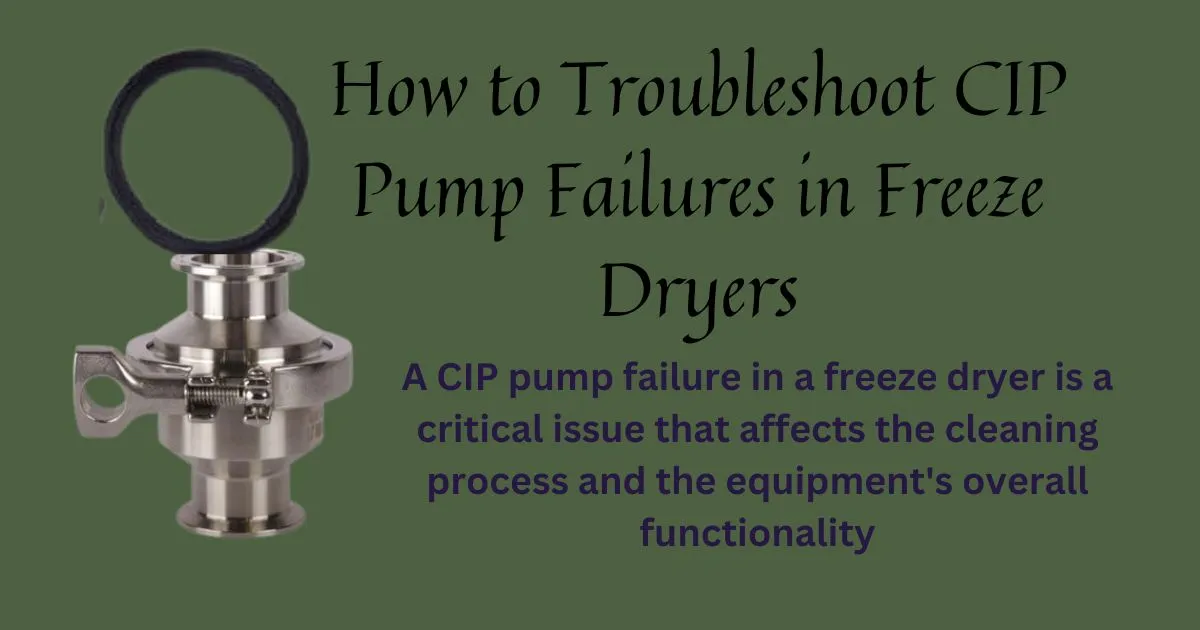A CIP pump failure in a freeze dryer is a critical issue that affects the cleaning process and the equipment’s overall functionality. This failure occurs when the motor contactor is signaled to turn on but does not report back the status as “ON.” Several causes can contribute to this issue, such as a tripped motor protection switch in the power distribution cabinet, a malfunctioning coil in the motor contactor, or an interruption in the control line to the motor contactor.
Additionally, clogs, obstructions, or malfunctioning devices within the CIP system could exacerbate the problem. Regular inspection and maintenance of these components are vital to ensure smooth operation, as blockages or malfunctions can prevent proper cleaning and disrupt the freeze-drying process. This failure message is given when the related motor contactor is commanded on, but the status ON is not reported.
The causes for this failure could be:
- motor protection switch in the power distribution cabinet has tripped.
- The coil of motor contractor is The control line to the motor contactor has been interrupted
Inspect for clogs, obstructions, and malfunctioning devices when encountering CIP issues
- Check for clogs, blocks, and failed devices if there are CIP problems.
- CIP flow enters the check valve inlet, and the fluid pushes a ball into the open cavity. The ball usually moves in the direction of the red arrow.
- Ball check valves use rubber-coated stainless steel balls, which can get stuck when the rubber coating fails.
- High-velocity force from the supply pump can jam these balls into the cavity, sometimes requiring significant force (e.g., a sledgehammer) to remove.
- Disc check valves are more susceptible to being blocked, locked in open or closed positions, or stuck somewhere in between.
- Disc check valves typically have a higher pressure drop than ball check valves but take up less space. They can clog easily and are sensitive to hydraulic shock.
- Spray devices in CIP systems can become clogged, blocked, or fail, leading to improper cleaning.
- Strategic sample points throughout the CIP process help compare bacterial counts and verify the hygiene effectiveness.
- Documenting your CIP process is essential for understanding potential issues, including failed level control or blockages in the system.
- Understanding the engineering of the CIP system and each step in the cleaning process is crucial for identifying and resolving problems.
